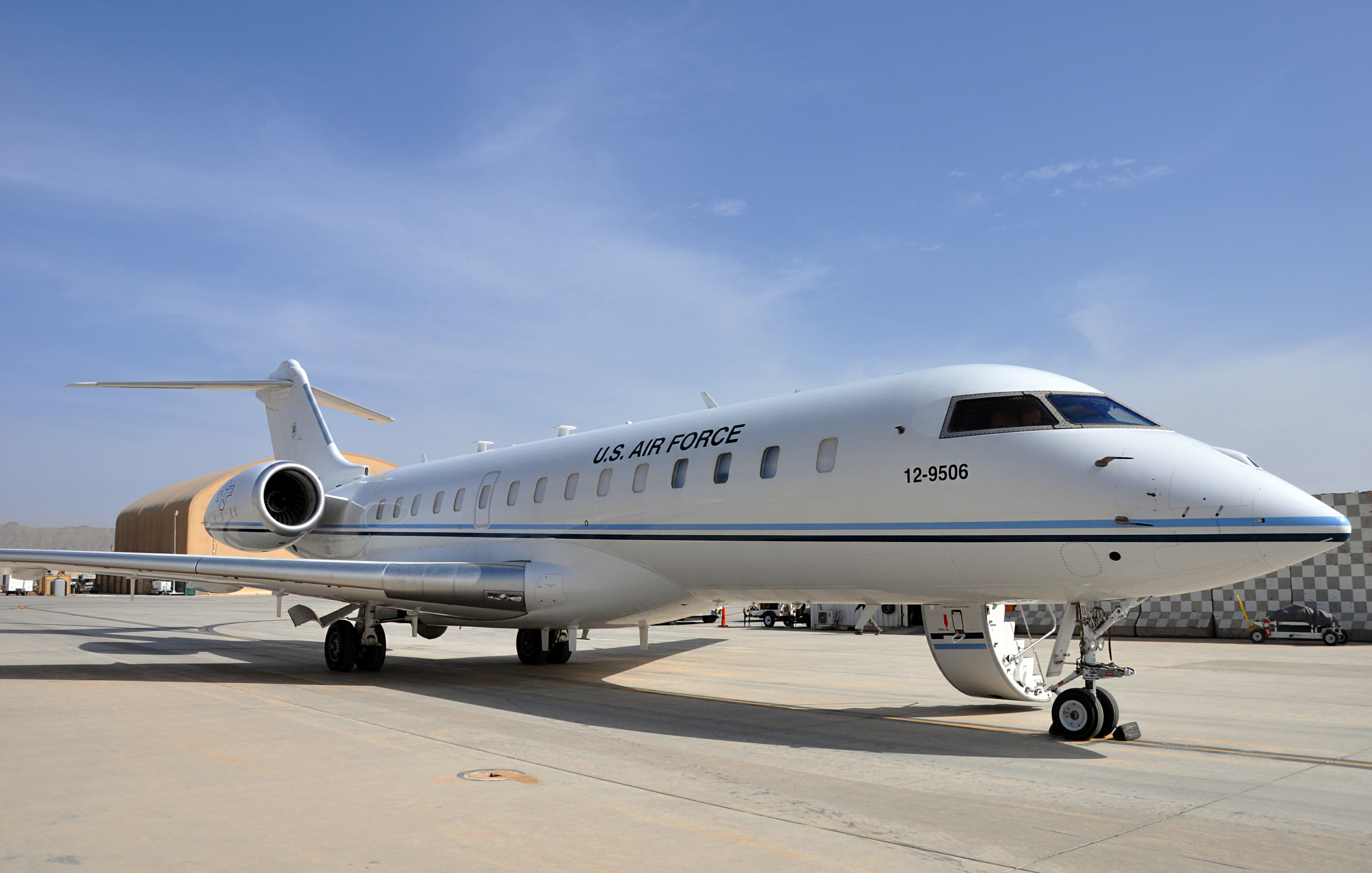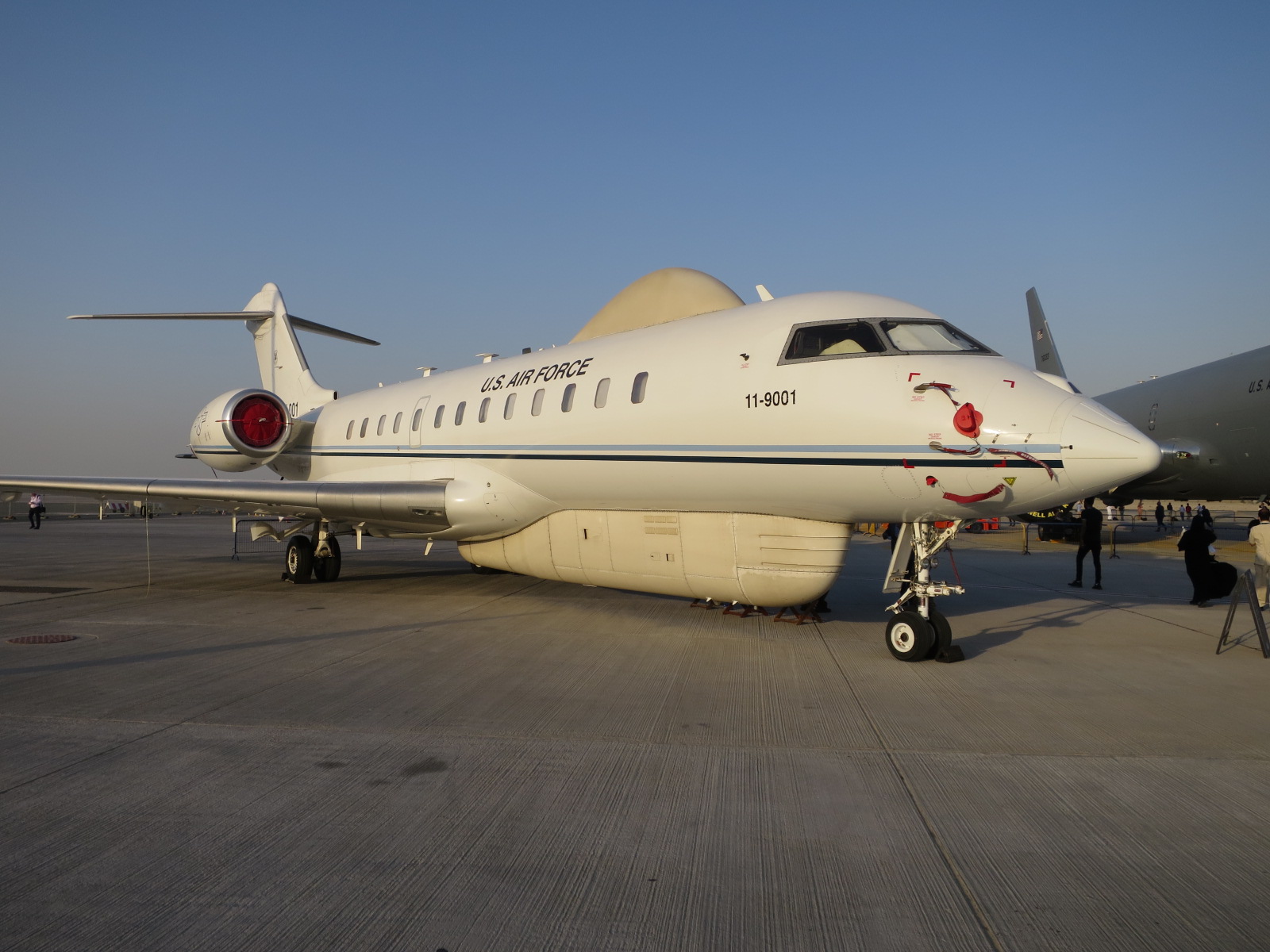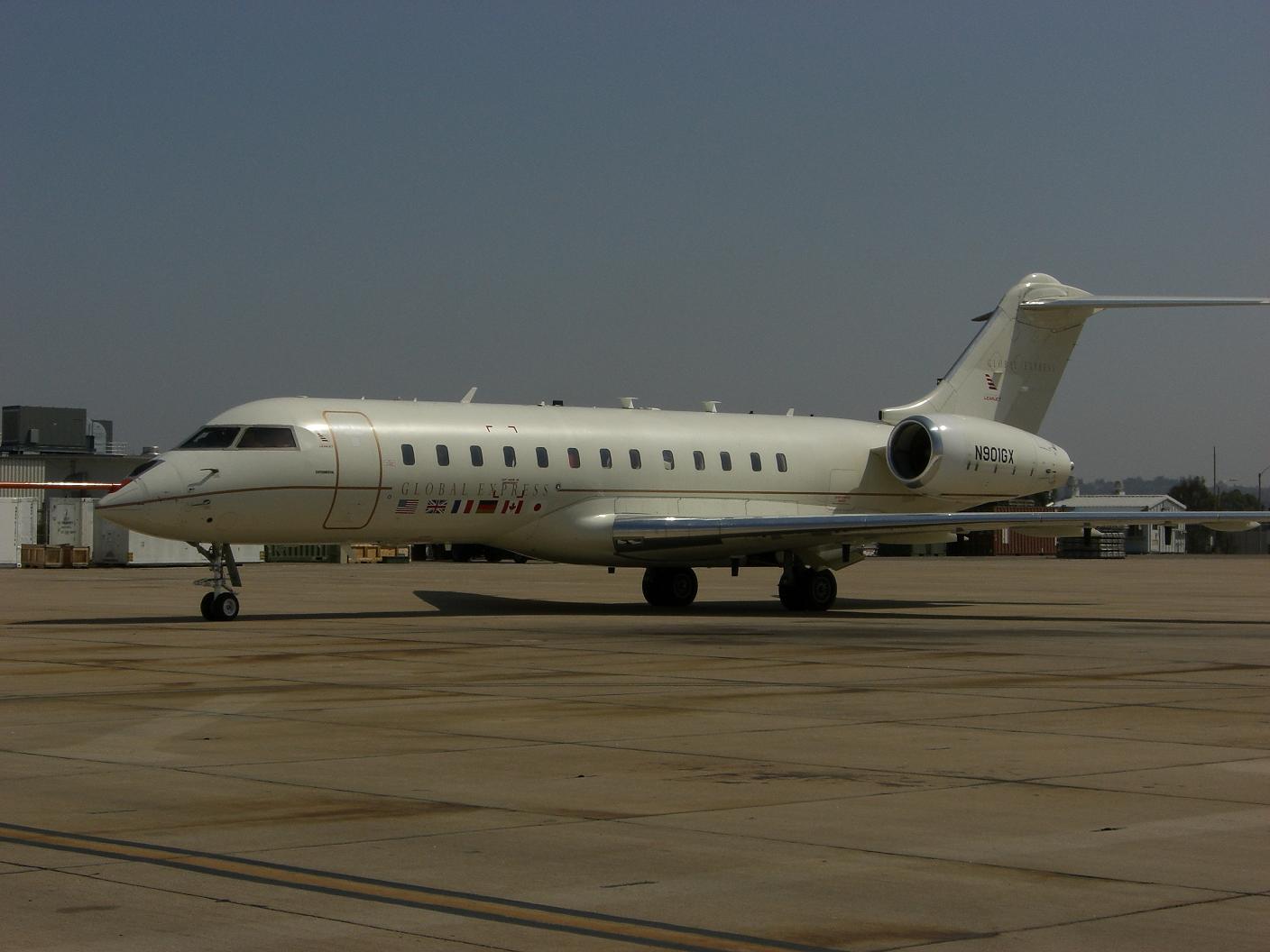Battlefield Airborne Communications Node on:
[Wikipedia]
[Google]
[Amazon]

 The Battlefield Airborne Communications Node (BACN) is a
The Battlefield Airborne Communications Node (BACN) is a
 Interoperability between airborne networking waveforms has been a persistent challenge. There have been multiple systems developed to address the challenge to include Air Defense Systems Integrator (ADSI), Gateway Manager, and Joint Range Extension (JRE) product lines. However, those product lines were separately funded/maintained and had interoperability concerns of their own. The solution was an "Objective Gateway" which would serve as a Universal Translator to make data from one network interoperable with another.
In 2005, the USAF's AFC2ISRC and ESC created BACN as an Objective Gateway technology demonstrator to provide voice and data interoperability between aircraft in a single battle area. The four key principles were
* radio agnostic - it would support a variety of communication protocols
* platform agnostic - BACN could be mounted on a variety of aircraft
* un-tethered - unlike previous repeaters, which were hung from floating aerostats, BACN has the ability to move within the battlespace
* Knowledge-based intelligence - the ability to sense waveform characteristics of sender and receiver and automatically route traffic.
The BACN first flight was November 2005 at MCAS Miramar in San Diego, CA.
BACN was successfully demonstrated in Joint Expeditionary Force eXperiment (JEFX) 2006 and JEFX 2008 and selected for field deployment.
Interoperability between airborne networking waveforms has been a persistent challenge. There have been multiple systems developed to address the challenge to include Air Defense Systems Integrator (ADSI), Gateway Manager, and Joint Range Extension (JRE) product lines. However, those product lines were separately funded/maintained and had interoperability concerns of their own. The solution was an "Objective Gateway" which would serve as a Universal Translator to make data from one network interoperable with another.
In 2005, the USAF's AFC2ISRC and ESC created BACN as an Objective Gateway technology demonstrator to provide voice and data interoperability between aircraft in a single battle area. The four key principles were
* radio agnostic - it would support a variety of communication protocols
* platform agnostic - BACN could be mounted on a variety of aircraft
* un-tethered - unlike previous repeaters, which were hung from floating aerostats, BACN has the ability to move within the battlespace
* Knowledge-based intelligence - the ability to sense waveform characteristics of sender and receiver and automatically route traffic.
The BACN first flight was November 2005 at MCAS Miramar in San Diego, CA.
BACN was successfully demonstrated in Joint Expeditionary Force eXperiment (JEFX) 2006 and JEFX 2008 and selected for field deployment.
AF C2 Integration Center
Military electronics Networking standards Northrop Grumman

 The Battlefield Airborne Communications Node (BACN) is a
The Battlefield Airborne Communications Node (BACN) is a United States Air Force
The United States Air Force (USAF) is the air service branch of the United States Armed Forces, and is one of the eight uniformed services of the United States. Originally created on 1 August 1907, as a part of the United States Army Si ...
(USAF) airborne communications relay
A relay
Electromechanical relay schematic showing a control coil, four pairs of normally open and one pair of normally closed contacts
An automotive-style miniature relay with the dust cover taken off
A relay is an electrically operated switch ...
and gateway system carried by the unmanned EQ-4B and the manned Bombardier E-11A
The Bombardier Global Express is a large cabin, 6,000 nmi / 11,100 km range business jet designed and manufactured by Bombardier Aviation (formerly Bombardier Aerospace).
Announced in October 1991, it first flew on 13 October 1996, receiv ...
aircraft. BACN enables real-time
Real-time or real time describes various operations in computing or other processes that must guarantee response times within a specified time (deadline), usually a relatively short time. A real-time process is generally one that happens in defined ...
information flow across the battlespace
Battlespace or battle-space is a term used to signify a unified military strategy to integrate and combine armed forces for the military theatre of operations, including air, information, land, sea, cyber and outer space to achieve milit ...
between similar and dissimilar tactical data link
A tactical data link (TDL) uses a data link standard in order to provide communication via radio waves or cable used by NATO nations. All military C3 systems use standardized TDL to transmit, relay and receive tactical data.
Multi-TDL netw ...
and voice systems through relay, bridging, and data translation in line-of-sight and beyond-line-of-sight situations. Its ability to translate between dissimilar communications systems allows them to interoperate without modification.
Because of its flexible deployment
Deployment may refer to:
Engineering and software Concepts
* Blue-green deployment, a method of installing changes to a web, app, or database server by swapping alternating production and staging servers
* Continuous deployment, a software e ...
options and ability to operate at high altitudes, BACN can enable air and surface forces to overcome communications difficulties caused by mountains, other rough terrain, or distance. BACN provides critical information to all operational
An operational definition specifies concrete, replicable procedures designed to represent a construct. In the words of American psychologist S.S. Stevens (1935), "An operation is the performance which we execute in order to make known a concept." F ...
echelons and increases situational awareness
Situational awareness or situation awareness (SA) is the perception of environmental elements and events with respect to time or space, the comprehension of their meaning, and the projection of their future status. An alternative definition is tha ...
by correlating tactical and operational air and ground pictures. For example, an Army unit on the ground currently sees a different picture than an aircrew, but with BACN, both can see the same picture.
On 22 February 2010, the US Air Force and the Northrop Grumman BACN Team received the 2010 Network Centric Warfare
Network-centric warfare, also called network-centric operations or net-centric warfare, is a military doctrine or theory of war that aims to translate an information advantage, enabled partly by information technology, into a competitive advantag ...
Award from the Institute for Defense and Government Advancement.
On 27 January 2020, USAF E-11A, serial 11-9358, crashed in Afghanistan at about 1:00 PM (LT); 8:30 AM (UTC).
Purpose
Individual tactical data links, such asLink 16
Link 16 is a military tactical data link network used by NATO and nations allowed by the MIDS International Program Office (IPO). Its specification is part of the family of Tactical Data Links.
With Link 16, military aircraft as well as ship ...
and EPLRS, are part of the larger tactical data link network, encompassing tactical data links, common data links, and weapon data links. Most military platforms or units are equipped with a tactical data link capability tailored to their individual missions. Those tactical data link capabilities are not necessarily interoperable
Interoperability is a characteristic of a product or system to work with other products or systems. While the term was initially defined for information technology or systems engineering services to allow for information exchange, a broader def ...
with one another, preventing the digital exchange of information between military units. BACN acts as a universal translator, or gateway, that makes the tactical data links work with one another. BACN also serves as an airborne repeater
In telecommunications, a repeater is an electronic device that receives a signal and retransmits it. Repeaters are used to extend transmissions so that the signal can cover longer distances or be received on the other side of an obstruction. Som ...
, connecting tactical data link equipped military units that are not within line of sight of one another.
Background
 Interoperability between airborne networking waveforms has been a persistent challenge. There have been multiple systems developed to address the challenge to include Air Defense Systems Integrator (ADSI), Gateway Manager, and Joint Range Extension (JRE) product lines. However, those product lines were separately funded/maintained and had interoperability concerns of their own. The solution was an "Objective Gateway" which would serve as a Universal Translator to make data from one network interoperable with another.
In 2005, the USAF's AFC2ISRC and ESC created BACN as an Objective Gateway technology demonstrator to provide voice and data interoperability between aircraft in a single battle area. The four key principles were
* radio agnostic - it would support a variety of communication protocols
* platform agnostic - BACN could be mounted on a variety of aircraft
* un-tethered - unlike previous repeaters, which were hung from floating aerostats, BACN has the ability to move within the battlespace
* Knowledge-based intelligence - the ability to sense waveform characteristics of sender and receiver and automatically route traffic.
The BACN first flight was November 2005 at MCAS Miramar in San Diego, CA.
BACN was successfully demonstrated in Joint Expeditionary Force eXperiment (JEFX) 2006 and JEFX 2008 and selected for field deployment.
Interoperability between airborne networking waveforms has been a persistent challenge. There have been multiple systems developed to address the challenge to include Air Defense Systems Integrator (ADSI), Gateway Manager, and Joint Range Extension (JRE) product lines. However, those product lines were separately funded/maintained and had interoperability concerns of their own. The solution was an "Objective Gateway" which would serve as a Universal Translator to make data from one network interoperable with another.
In 2005, the USAF's AFC2ISRC and ESC created BACN as an Objective Gateway technology demonstrator to provide voice and data interoperability between aircraft in a single battle area. The four key principles were
* radio agnostic - it would support a variety of communication protocols
* platform agnostic - BACN could be mounted on a variety of aircraft
* un-tethered - unlike previous repeaters, which were hung from floating aerostats, BACN has the ability to move within the battlespace
* Knowledge-based intelligence - the ability to sense waveform characteristics of sender and receiver and automatically route traffic.
The BACN first flight was November 2005 at MCAS Miramar in San Diego, CA.
BACN was successfully demonstrated in Joint Expeditionary Force eXperiment (JEFX) 2006 and JEFX 2008 and selected for field deployment.
Joint support
Getting critical air support to troops in contact with the enemy supports both troops on the ground and in the air. This project is not limited to combat operations. It has provided the World Food convoy commander with “comms-on-the-move.” This capability allows convoys to stay in continuous contact with air support and with command channels in complex or adverse terrain, while mitigating exposure to attacks as the node is continually moving.Platforms
The BACN prototype was originally developed and tested in 2005-2008 on the NASA WB-57 high altitude test aircraft during Joint Expeditionary Force Experiments and other experimentation venues. The last two flying WB-57s were used for this mission in Afghanistan. BACN was also deployed for testing on aBombardier Global 6000
The Bombardier Global Express is a large cabin, 6,000 nmi / 11,100 km range business jet designed and manufactured by Bombardier Aviation (formerly Bombardier Aerospace).
Announced in October 1991, it first flew on 13 October 1996, receiv ...
and originally designated as the RC-700A under a reconnaissance classification. The aircraft was later re-designated as the E-11A under the special electronics installation category. The Global 6000 was selected due to its high service ceiling (up to 51,000 ft) and long flight duration (up to 12 hours). These flight characteristics are critical in providing unified datalink and voice networks in the mountainous terrain encountered in the current theater of operations.
Additional E-11As have been deployed to increase availability and flexibility. These have been used in operations in Afghanistan.
BACN payloads have also been developed, installed, and operated on special variant EQ-4B Global Hawk aircraft to provide unmanned long endurance high altitude communications coverage. The combination of BACN payloads on E-11A and EQ-4 aircraft gives planners and operators flexibility to adapt to mission needs and increase coverage in the battlespace to near 24/7 operations. The effectiveness of BACN has increased the demand for more EQ-4B Global Hawk aircraft to be created and installed with BACN to be utilized in the field. The BACN system continues to be a high in-demand system that the Air Force will more than likely continue to use for many years to come.
Northrop Grumman has also developed BACN pods that can be temporarily mounted to other various aircraft.
BACN as a concept
BACN has been a controversial program within the DoD. This is caused by a number of issues including the personality clashes between the service people who conceived the project back in late 2004 and the traditional acquisition bureaucracy. This was particularly true between requirements developers at the former Air Force Command and Control Intelligence, Surveillance, Reconnaissance Center at Langley AFB, Virginia and their acquisition partners at the Electronic Systems Center (ESC) atHanscom AFB
Hanscom Air Force Base (AFB) is a United States Air Force base located predominantly within Bedford, Massachusetts, with portions extending into the adjoining towns of Lincoln, Concord and Lexington. The facility is adjacent to Hanscom Fiel ...
, Massachusetts, part of Air Force Materiel Command
Air Force Materiel Command (AFMC) is a major command ( MAJCOM) of the United States Air Force (USAF). AFMC was created on July 1, 1992, through the amalgamation of the former Air Force Logistics Command (AFLC) and the former Air Force Systems Co ...
.
BACN divides military planners and acquisition bureaucrats on two main fronts. First, how will an "Airborne Network" evolve beyond the existing tactical data links on today's platforms. Second, the BACN effort presupposes that the capability will initially be "outsourced" to commercial companies that will provide an "airborne network" as a service to the DOD for the foreseeable future.
Future
With the increasing likelihood of a contested electromagnetic spectrum (EMS) in an era of great power competition, the idea of a "BACN-mesh" was proposed by Professor Jahara Matisek (and former E-11 BACN pilot) at the US Air Force Academy, as a way of pursuing new multi-domain war-fighting options against near-peers. Specifically, Prof. Matisek suggests that smart node pods (i.e. a BACN-light payloads affixed to aircraft with hardpoints), could provided layered BACN “bridging” connections and TDL services to war-fighters in an EMS-contested battlespace, without deploying a specific BACN aircraft. For example, in the Pacific – where infrastructure is limited – a “BACN-mesh” concept could be employed to create real-time battlespace pictures, proving useful when a near-peer adversary attempts localized jamming across the EMS. A "BACN-mesh" concept, if properly employed with numerous smart node equipped aircraft, would "create a complex, impregnable, and mutually reinforcing communication network with multiple relay nodes."See also
*Global Information Grid
The Global Information Grid (GIG) is a network of information transmission and processing maintained by the United States Department of Defense. More descriptively, it is a worldwide network of information transmission, of associated processes, a ...
* Airborne radio relay Airborne radio relay is a technique employing aircraft fitted with radio relay stations for the purpose of increasing the range, flexibility, or physical security of communications systems. The aircraft may be manned or unmanned aerial vehicles.
Us ...
References
{{ReflistExternal links
AF C2 Integration Center
Military electronics Networking standards Northrop Grumman